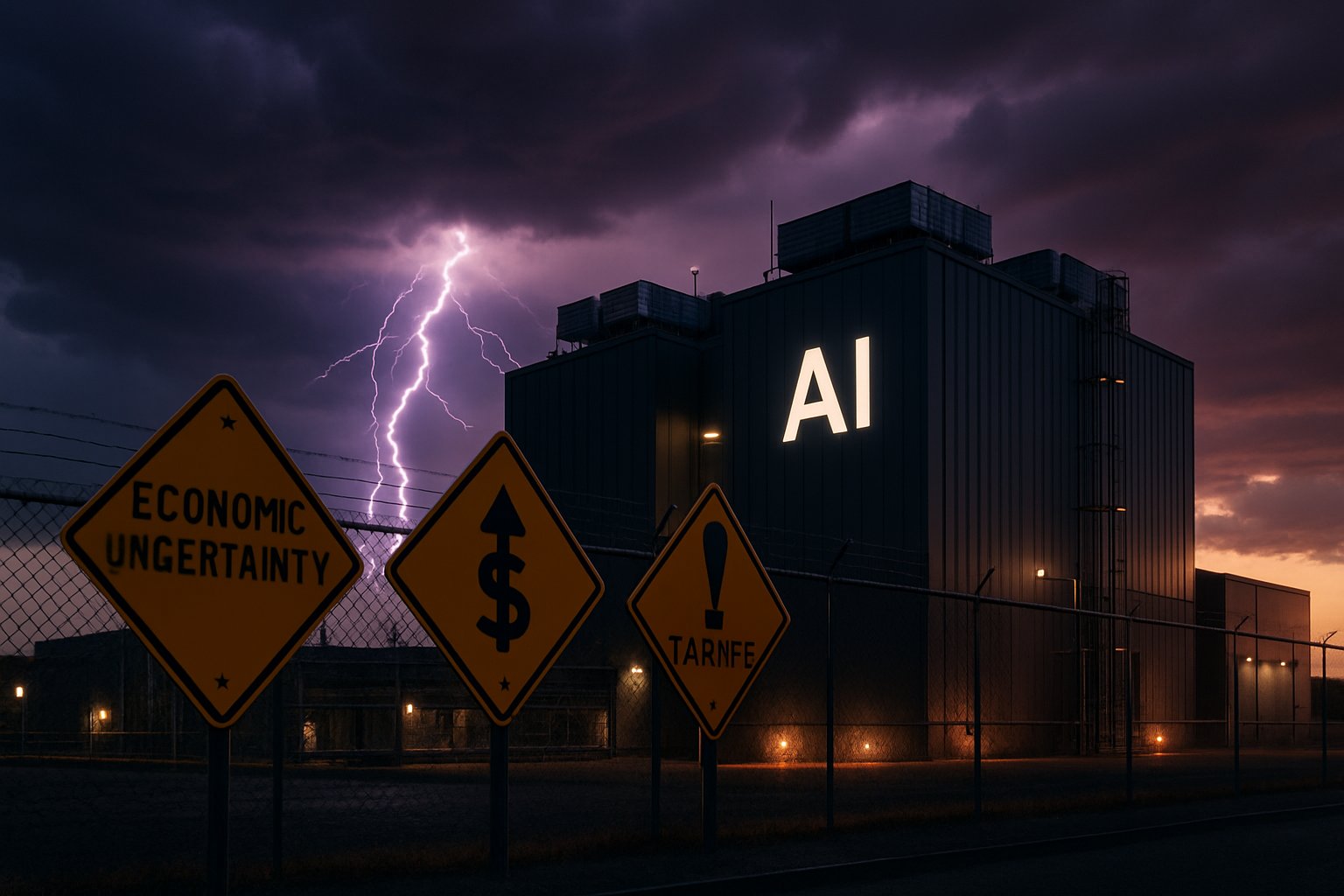
AI CERTS
1 day ago
Tariffs Trigger Hyperscaler Selloff Shock
Consequently, the Magnificent Seven group surrendered more than $1 trillion before partial relief arrived. Investors now debate whether the drop marks a rotation signal or only a tariff-driven tremor.
Tariffs Jolt Tech Giants
The April 3 announcement imposed a 10% baseline levy plus steeper reciprocal rates. In contrast, hardware-heavy players suffered first. Apple plunged almost 9% intraday, leading losses. Meanwhile, Amazon and Microsoft bore sizable wounds, igniting talk of a prolonged hyperscaler selloff. JPMorgan analysts warned the breadth of duties surprised markets. Furthermore, index trackers like the Roundhill Magnificent Seven ETF lost over 10% across March-April.

Key numbers illustrate scale:
- Amazon: -6% to -9% swings, April 3–4 sessions
- Microsoft: -7% peak intraday drop, April 3
- Group market-cap loss: >$1 trillion at trough
- Nasdaq: worst day since 2020 pandemic panic
These figures highlight concentration risk embedded in indices. However, exemptions announced on April 9 sparked a quick rebound that restored nearly $1.5 trillion. Investors remain uneasy.
The tariff shock underscored valuation fragility. Nevertheless, the episode also amplified market leadership evaporation concerns. Forward-looking managers now reassess positioning.
Market Leadership Evaporation Story
Tech dominance drove 2024 gains. Suddenly, that dominance cracked. Moreover, the hyperscaler selloff exposed how concentrated benchmarks remain. Analysts noted Apple, Microsoft, and Amazon account for double-digit slices of both S&P 500 and Nasdaq 100. Consequently, modest percentage dips yield massive wealth destruction.
Several strategists highlighted ongoing market leadership evaporation. Additionally, elevated valuations magnify downside when external shocks surface. In contrast, cyclicals held firmer during the tariff storm, hinting at an early rotation signal.
The leadership wobble warns allocators that risk parity across sectors is vital. However, they must also weigh innovation premiums still embedded in AI plays.
Leadership erosion is evident. Yet, valuation resets can nurture healthier bases. Therefore, investors pursue balanced exposure before the next catalyst.
Cloud Capex Anxiety Grows
Hardware tariffs instantly raised cloud capex concerns. Servers, GPUs, and networking gear all carry imported components. Moreover, uncertain input costs complicate multi-year budget cycles already inflated by AI build-outs. Morgan Stanley models suggest a 10% cost rise could shave 50 basis points off cloud margins.
Consequently, CFOs briefly paused purchase orders. Michael Ashley Schulman told Reuters the White House reprieve “gives breathing room to proceed with AI projects.” Nevertheless, executives remain cautious. Furthermore, the hyperscaler selloff tightened equity compensation budgets, another drag on spending momentum.
Yet capital intensity cannot stall indefinitely. Competitors race for generative AI scale. Professionals can enhance their expertise with the AI Cloud Architect™ certification to navigate evolving procurement demands.
Capex jitters linger, pressuring supplier roadmaps. However, flexible design and domestic sourcing initiatives might soften blows during future shocks.
AI Infrastructure Under Scrutiny
With valuations sliding, AI infrastructure questioned headlines proliferated. Investors asked if ROI assumptions for large-language-model clusters still hold. Moreover, tariff risk compounds supply-chain volatility for GPUs already in shortage.
Nvidia shed up to 8% during the April slide, highlighting sensitivity. Furthermore, software-centric Microsoft faces indirect exposure because Azure still relies on imported chips and racks. Consequently, the hyperscaler selloff sparked fresh debate around diversified hardware procurement.
Boards now demand scenario planning. Additionally, analysts push companies to disclose per-region build costs and tariff hedges. In contrast, bullish voices argue demand elasticity in AI remains intact even at higher price points.
Infrastructure worries persist. Yet, regulatory clarity or supply chain shifts could restore sentiment quickly.
Rotation Signal For Investors
Equity desks spotted a potential rotation signal during the turmoil. Financials, energy, and small caps outperformed mega-caps between April 3 and 7. Moreover, factor trackers showed value indices dropping only 2%, versus 6% for growth.
Subsequently, partial rebounds muddied the signal. Nevertheless, portfolio managers trimmed positions to manage volatility. Furthermore, option markets priced elevated skew in tech, reflecting lingering caution around another hyperscaler selloff.
Rotation chatter carries weight because crowded trades exacerbate swings. Therefore, tactical rebalancing toward less correlated sectors may enhance resilience if similar shocks emerge.
Momentum cooled, supporting a careful shift. However, confirmation requires sustained relative strength outside tech.
Strategic Takeaways And Actions
Boards, treasury teams, and investors can apply several lessons:
- Diversify supply chains to buffer tariff shocks
- Stress-test margins against 10% component cost hikes
- Track cloud capex concerns in quarterly guidance
- Monitor market leadership evaporation metrics monthly
- Consider cyclicals when a rotation signal emerges
Additionally, governance teams should embed real-time policy monitoring dashboards. Moreover, adopting training such as the linked AI Cloud Architect™ credential sharpens technical oversight.
These actions fortify strategic agility. Consequently, organizations stand better prepared for another hyperscaler selloff or related macro shock.
Risk mitigation steps offer defensive value. Nevertheless, disciplined execution determines ultimate effectiveness.



